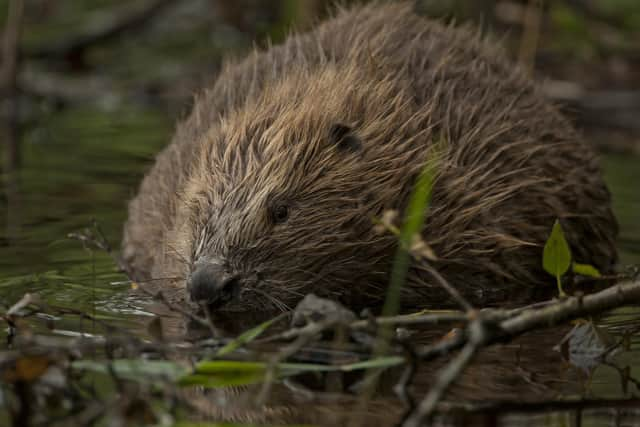New national strategy sets out how Scotland’s wild beavers will be managed in coming decades
Now a new national route map has been set out, detailing how beavers will be managed over coming decades.
The dam-building rodents are once again living wild and thriving in a number of locations in Scotland, with populations successfully increasing and spreading.
Advertisement
Hide AdAdvertisement
Hide AdThey became extinct in the 16th century, mainly due to hunting for their fur, meat and castoreum, a glandular oil secreted from the base of their tail that was used in perfumes, food and medicine.
Their return has come through a combination of an official reintroduction project and unauthorised releases.
More than 50 stakeholder organisations have been involved in devising Scotland’s Beaver Strategy 2022-2045 and have said it constitutes one of the most ambitious and forward-looking approaches to managing and conserving a species ever carried out in the UK.
The plan will steer efforts to identify suitable new locations for beavers to set up home and actively expand the population to new areas, while advising on appropriate measures to counterbalance any negative impacts.


It comes following the Scottish Government’s decision to back wider recolonisation by the species.
Beavers are described as nature’s engineers and their presence is considered to bring a wide range of ecological improvements to river catchments.
However, their activities can damage trees and cause flooding, sparking conflict with farmers and landowners.
The strategy sets out plans to empower and support communities to maximise the environmental and wider benefits of beavers, while minimising downsides through effective management and mitigation efforts.
Advertisement
Hide AdAdvertisement
Hide AdThe most recent official estimates suggest there are around 1,000 beavers spread across 250 territories in Scotland, mainly in the Forth and Tay catchments.
“Just 25 years ago, most people would not have imagined that beavers would soon return as a member of our Scottish fauna,” said Greens MSP Lorna Slater, biodiversity minister for Scotland.
“Now they are returning we have a responsibility to look after and value them – to learn to live alongside these remarkable animals.
“This strategy, and our work together to deliver it, is an important and welcome step towards this goal.”
Sarah Robinson, director of conservation at the Scottish Wildlife Trust, said: “Biodiversity is declining at a faster rate now than at any time in human history.
“Beavers provide a nature-based solution to tackling the growing crisis.
“The national strategy sets out how to help beavers become established throughout Scotland’s lochs, burns and rivers, and the many ways that both people and wildlife will benefit from their presence.”
Karen Ramoo, policy adviser on forestry, conservation and wildlife management at Scottish Land & Estates, said: “Beavers can play an important ecological role in our environment whilst acknowledging the negative impacts that need to be mitigated, particularly for farmers and other rural businesses.
Advertisement
Hide AdAdvertisement
Hide Ad“The new strategy has taken significant work by many different organisations to create a framework whereby future beaver expansion can be both supported and managed appropriately. It is an ambitious strategy that will require long-term political will and financial support in order to be effective for the species itself.”
Comments
Want to join the conversation? Please or to comment on this article.
